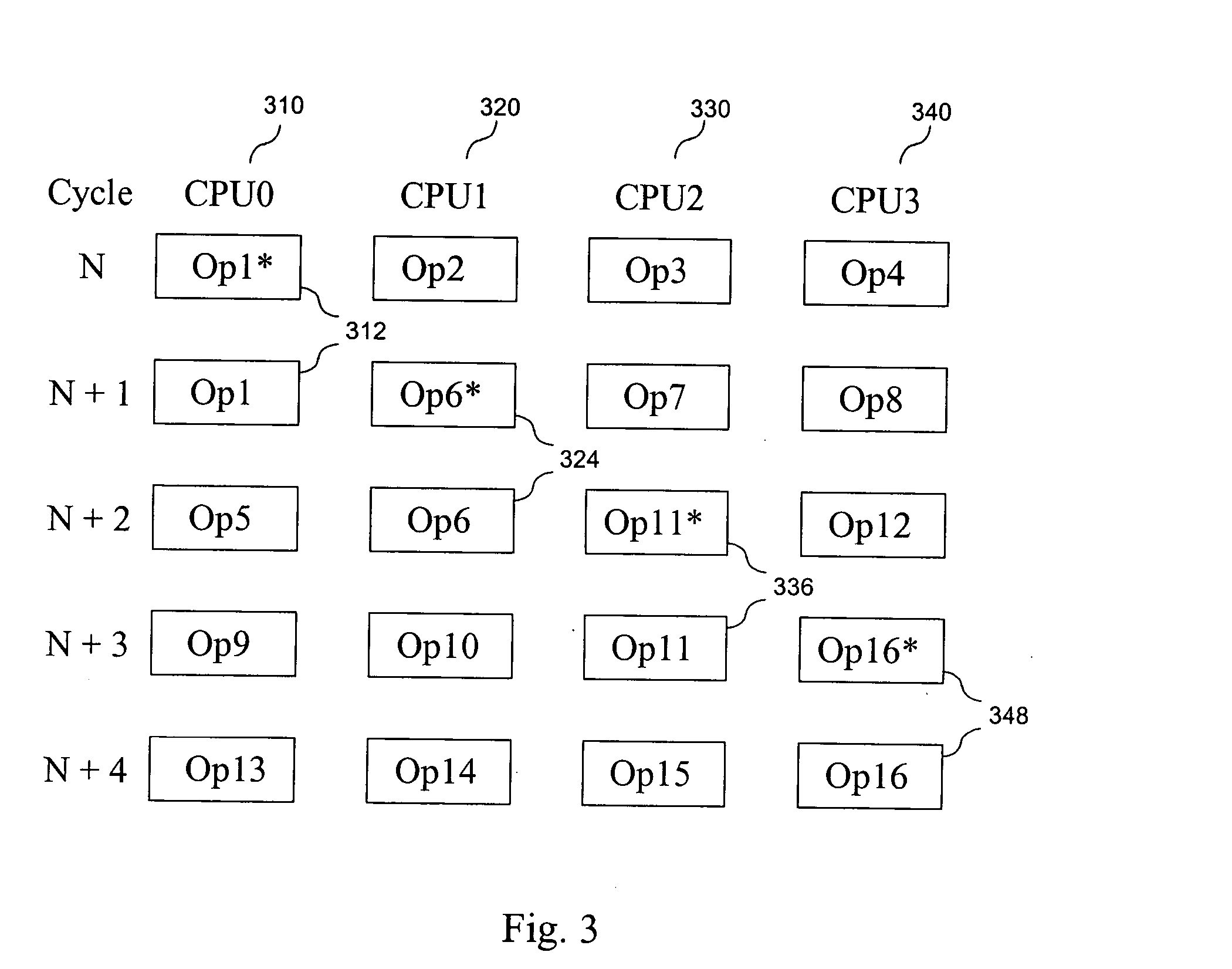Single-chip multiprocessor with clock cycle-precise program scheduling of parallel execution
a single-chip, parallel execution technology, applied in the direction of program synchronisation, program control, program allocation, etc., can solve the problems of increasing the delay at the program run, the hardware for resolving inter-instructor dependencies in superscalar microprocessors is becoming complicated, and the collision effect dynamically reduces. , the effect of increasing the performan
- Summary
- Abstract
- Description
- Claims
- Application Information
AI Technical Summary
Benefits of technology
Problems solved by technology
Method used
Image
Examples
examples presented
[0044] Examples presented in FIGS. 1, 2 and 3 illustrate that with the equal issue width in monoprocessor and multiprocessor systems, the latter is less affected by the collisions unaccounted for in static scheduling at the compilation stage.
[0045] In accordance with an embodiment, synchronization is implemented using special operations, which along with other operations are a part of wide instructions, and which are located in the synchronization points of the streams. The synchronization operation with the help of a set of bit pairs “wait” and “permit” specifies in a synchronization point the relationship between the given stream and each other stream. Presented below are possible states of bits relationship:
waitpermit00don't care01permit another stream10wait for another stream11wait for another stream, then permit another stream
[0046] Code 00 has no synchronization influence. Code 01 permits another stream to pass its synchronization point. Code 10 prescribes waiting for anothe...
PUM
 Login to View More
Login to View More Abstract
Description
Claims
Application Information
 Login to View More
Login to View More - R&D
- Intellectual Property
- Life Sciences
- Materials
- Tech Scout
- Unparalleled Data Quality
- Higher Quality Content
- 60% Fewer Hallucinations
Browse by: Latest US Patents, China's latest patents, Technical Efficacy Thesaurus, Application Domain, Technology Topic, Popular Technical Reports.
© 2025 PatSnap. All rights reserved.Legal|Privacy policy|Modern Slavery Act Transparency Statement|Sitemap|About US| Contact US: help@patsnap.com



